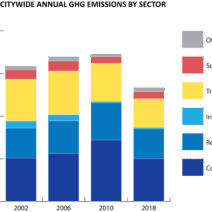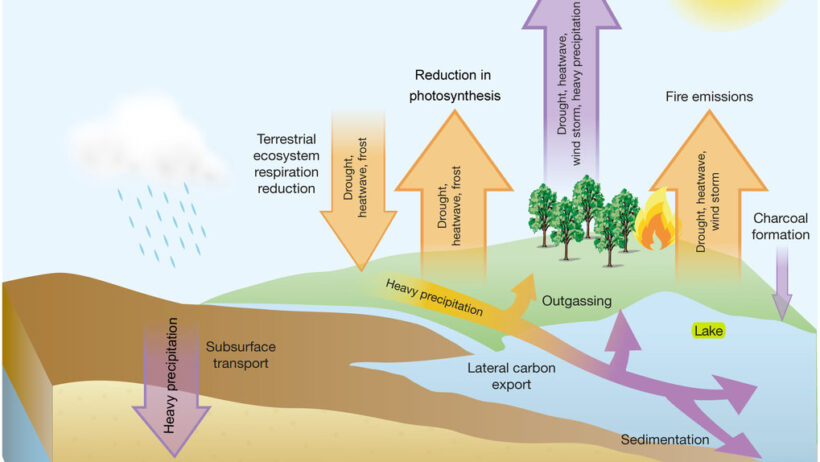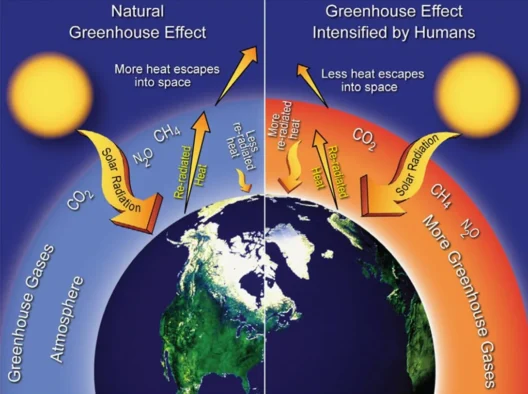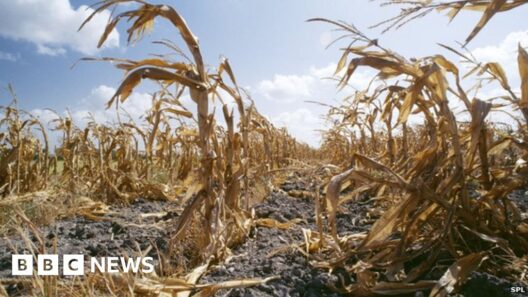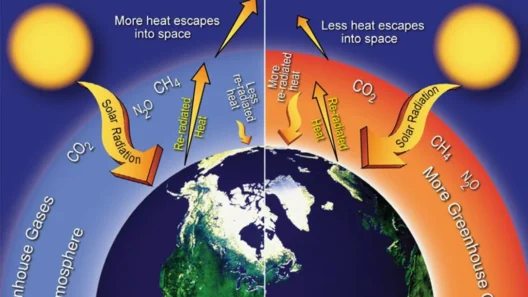In a world increasingly dominated by the ramifications of climate change, the patterns of precipitation that traditionally defined local climates are becoming both erratic and unpredictable. The transmutation of weather systems is no longer an abstract concept relegated to scientific discussions; it is an omnipresent reality that alters ecosystems, agriculture, and human livelihoods globally. This transformation evokes considerable interest, inviting deeper exploration into how the phenomena of storms and droughts converge to reflect the profound impacts of climate change on precipitation.
To comprehend this dynamically shifting landscape, one must first appreciate the mechanics of the hydrological cycle. Water evaporates from oceans and surface water bodies, condensing into clouds that eventually yield precipitation. Historically, this cycle followed predictable patterns, regulated by seasonal changes, geographic location, and local climate conditions. However, as global temperatures rise due to elevated greenhouse gas emissions, the behavior of this cycle is undergoing significant alteration. The increasing warmth facilitates greater evaporation, resulting in an atmosphere laden with more moisture. This seemingly paradoxical situation leads to intense precipitation events juxtaposed with prolonged periods of drought.
Storms are a prominent indicator of climate change’s impact on precipitation. The escalation of storm intensity due to warmer ocean waters is becoming more pronounced. Hurricanes, typhoons, and cyclones are showing trends of becoming more powerful, with unprecedented rainfall rates. This increase in the frequency and severity of such events is not merely statistical; it has tangible effects on communities and ecosystems. The torrential rains associated with these storms often lead to flooding, which can devastate infrastructure, displace populations, and disrupt local economies. The social ramifications are extensive, with vulnerable communities often the hardest hit. The confluence of heavier downpours and compromised drainage systems can create urban flood zones in cities that were once considered resilient.
However, the aftermath of intense storms serves as an impetus to re-evaluate water management policies and urban planning strategies. Engineers, urban planners, and environmental scientists are stepping up to address these challenges. Through innovative designs, such as permeable pavements and green roofs, cities are adapting to support sustainable urban drainage systems that can effectively manage the deluge of water. Moreover, the adoption of rainwater harvesting systems is becoming more prevalent, enabling communities to capture and utilize stormwater, thereby mitigating floods while increasing local water supplies. This shift in perspective ultimately promises resilience and adaptability in the face of climatic unpredictability.
On the other end of the spectrum lies the issue of drought—a phenomenon that is becoming increasingly fierce as climate change continues to progress. The intensification of droughts is a direct consequence of altered precipitation patterns, where certain regions receive insufficient rainfall over extended periods. The productive agricultural zones that once thrived on predictable wet seasons are now facing the possibility of severe crop failures. This engenders food insecurity and economic instability, particularly in developing nations reliant on agriculture. Droughts not only diminish crop yields but also lead to water scarcity, compelling farmers to exhaust groundwater supplies at an unsustainable rate.
This dire reality further emphasizes the necessity for innovative agricultural practices that can withstand the dual challenges of floods and droughts. Techniques such as permaculture, regenerative agriculture, and the incorporation of drought-resistant crop varieties are gaining ground. Farmers employing these approaches are witnessing not just survival, but regeneration of their lands, even amidst climatic extremes. These methods challenge the status quo and advocate for resilience in farming communities as they grapple with the changing environment. Knowledge dissemination regarding these sustainable practices is vital for fostering adaptation not only in agriculture but within broader ecosystems too.
Moreover, the interplay between storms and drought reveals the intricate connections within climate systems, sparking a burgeoning interest in interdisciplinary studies. Atmospheric scientists, climatologists, hydrologists, and agricultural experts are collaborating to develop holistic frameworks that elucidate the complexities of precipitation. This confluence of ideas fosters an environment ripe for innovation, potentially unveiling solutions that encompass climate mitigation strategies alongside adaptation methodologies.
As we delve deeper into the topic, we unearth another layer: the impact of climate change on groundwater resources. Deep aquifers, once thought to be impenetrable by surface-level weather changes, are increasingly affected by the intensified precipitation events and prolonged droughts. The resultant shifts can lead to saline intrusion in coastal areas, significantly degrading water quality. Addressing this requires comprehensive management of both surface and groundwater resources, recognizing their interdependencies amidst the backdrop of climatic flux.
In conclusion, the transformation of precipitation patterns driven by climate change serves as a clarion call for action. By understanding the profound effects of storms and droughts, we can pivot our discourse around climate resilience. It is imperative to embrace innovative solutions, encouraging collaboration across disciplines, while simultaneously empowering communities through sustainable practices. The path toward a sustainable future hinges not just on recognizing the challenges at hand, but also on cultivating curiosity and a commitment to reimagining our relationship with the water cycle and the environment. Our actions today can pave the way for a more resilient tomorrow, one where adaptation and sustainability become the cornerstones of human existence on this rapidly changing planet.


